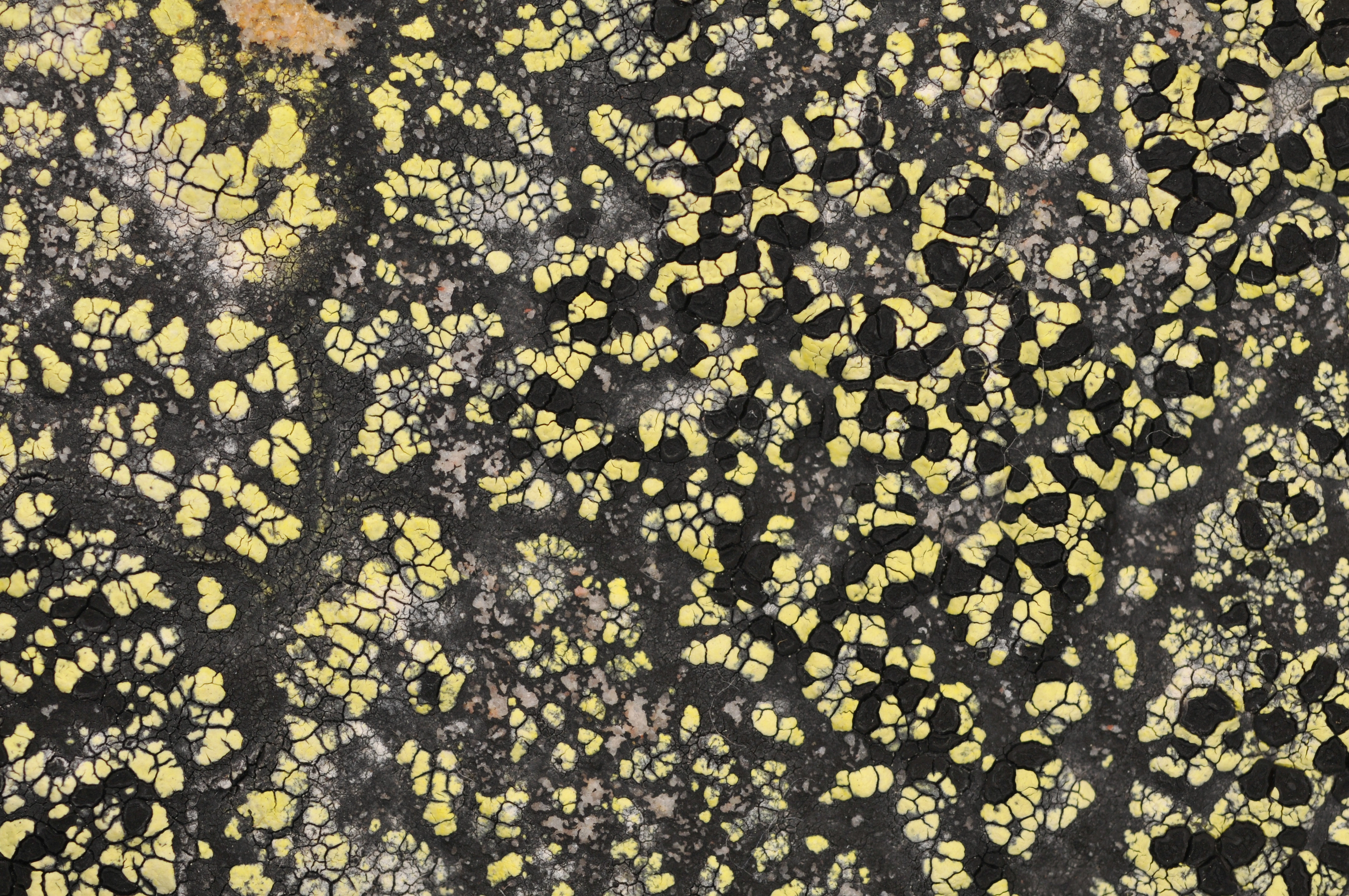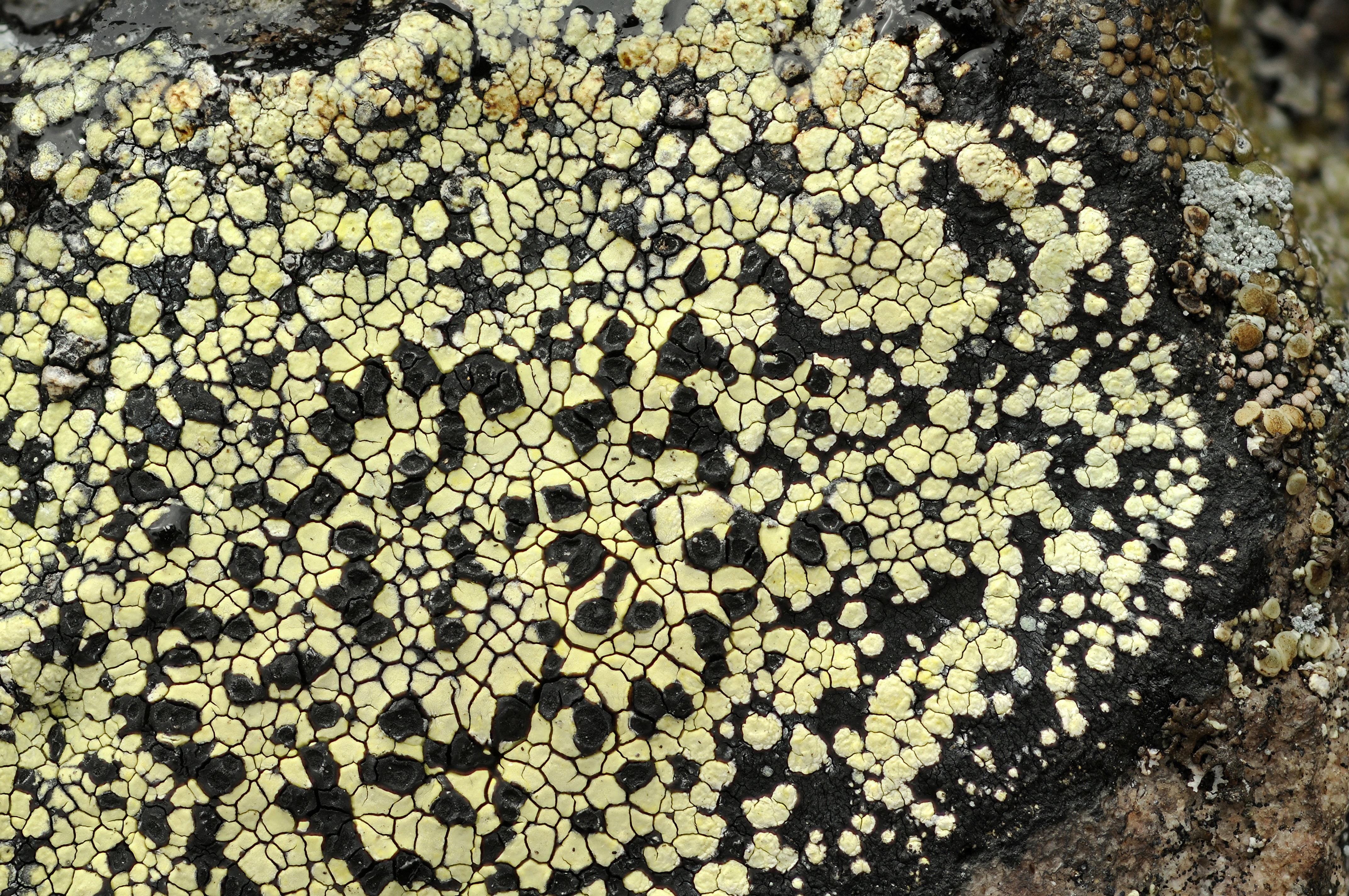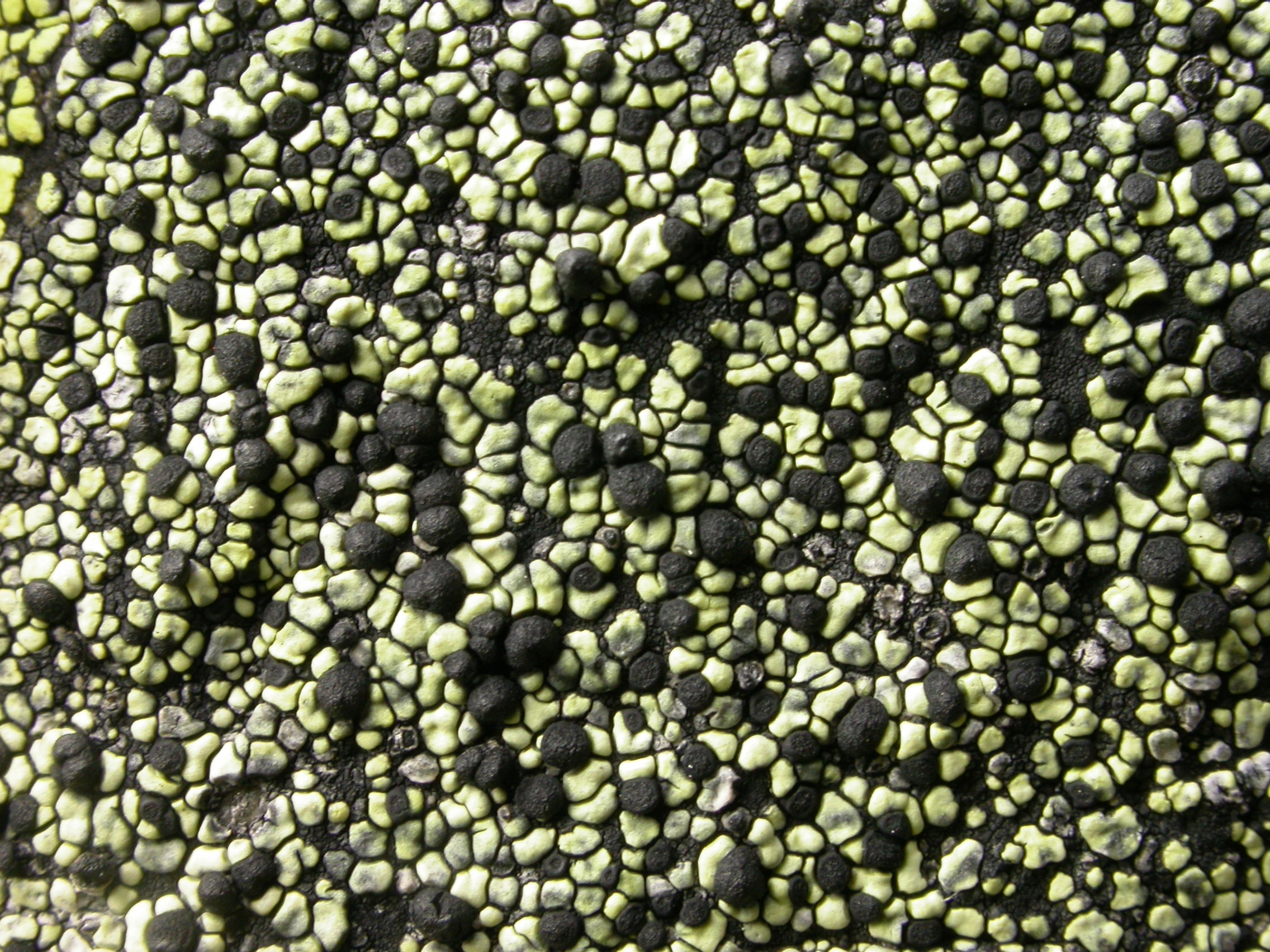Rhizocarpon alpicola
- Innhold
- Morphology
- Chemistry
- Habitat
- Comment
- Look-alikes
Morphology
Thallus areolate, up to 20 cm diam.; prothallus well developed, black, sometimes faintly pruinose; areolae up to 1.5 (–3) mm diam., bright yellow (very rarely pale grey), dull, contiguous to widely scattered, usually cracked, rather thick, orbicular to angular or irregular, plane to moderately convex, smooth or rarely minutely scabrous; medulla KI–. – Apothecia up to 1.5 mm diam., black, epruinose, orbicular to angular, plane to weakly convex, indistinctly marginate; excipulum reddish brown, K+ red; hypothecium dark brown K–; hymenium colourless; epihymenium pale brown or partly dark brown, K+ faintly red; no crystals or granules in the apothecium; ascospores 8 per ascus, 1-septate, dark brown, 18–32 × 9–15 µm. – Conidiomata not seen.
Chemistry
Rhizocarpic (very rarely lacking) and psoromic acid; spot test: medulla PD+ yellow, K–, C–.
Habitat
Common on siliceous rock in the mountains, also scattered in the lowlands. Distribution ranging from exposed peaks to snow beds.
Comment
The species is easily recognized by the large, yellow thallus with non-amyloid, K–, PD+ yellow medulla and large, more or less scattered areolae, the large, 1-septate ascospores, and the brown epihymenium.


